M Series Connectors
Are lightweight triplestart ratchet coupling type connectors designed for avionics, aerospace, Harsh Environment Connectors, security, motorsport and heavy duty applications.
Solar panel connectors are vital components of any solar array. They enable quick installation, replacement, and maintenance of photovoltaic (PV) panels. Hard-wiring solar panels together is impractical, which is why weather-resistant connectors are used in almost every solar installation. This article will explore different types of solar connectors and compare their features.
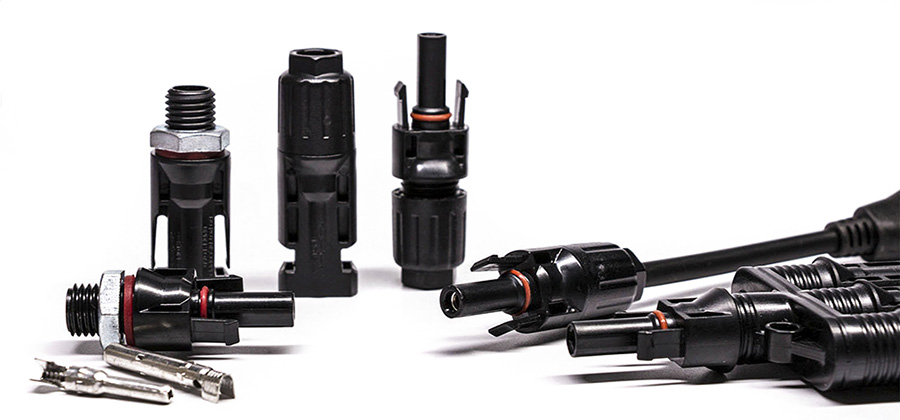
The solar panel connectors are instrumental devices utilized for establishing secure and reliable electrical connections among solar panels. They also serve to interconnect solar panels with other components within the photovoltaic system, such as inverters, charge controllers, and batteries. By ensuring efficient energy transmission, these connectors strive to minimize power losses within the system.
The MC4 connector stands as the most prevalent type of solar panel connector, widely recognized as the industry standard. MC4, an acronym for “Multi-Contact, 4 mm,” refers to the connector’s contact pins with a diameter of 4 mm.
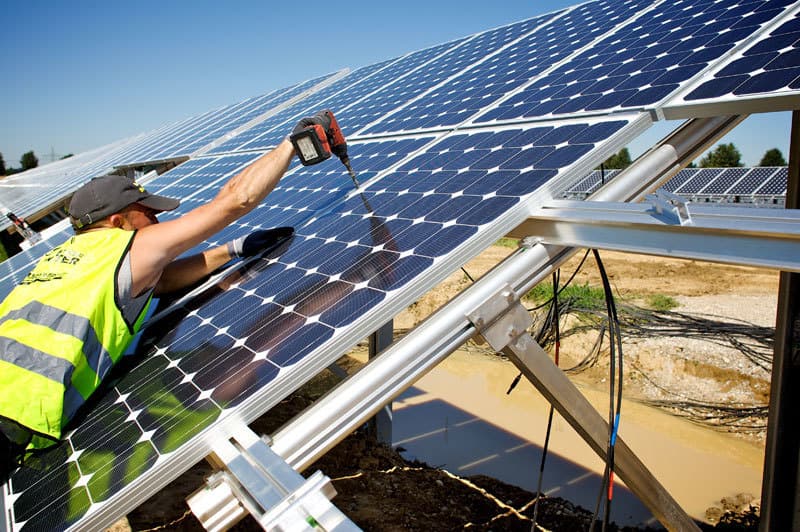
Manufacturers purposefully design MC4 connectors to withstand inclement weather conditions, effectively combating rain, wind, and UV radiation, thereby providing a durable and secure long-term connection. However, it is worth noting that connector issues have the potential to compromise the performance of photovoltaic systems during adverse weather conditions.
These connectors are categorized into male and female counterparts, ensuring proper connections while mitigating the risk of reverse polarity. When serially or in parallel, connecting solar panels necessitates the use of suitable connectors to maintain the stability and optimal efficiency of the photovoltaic system.
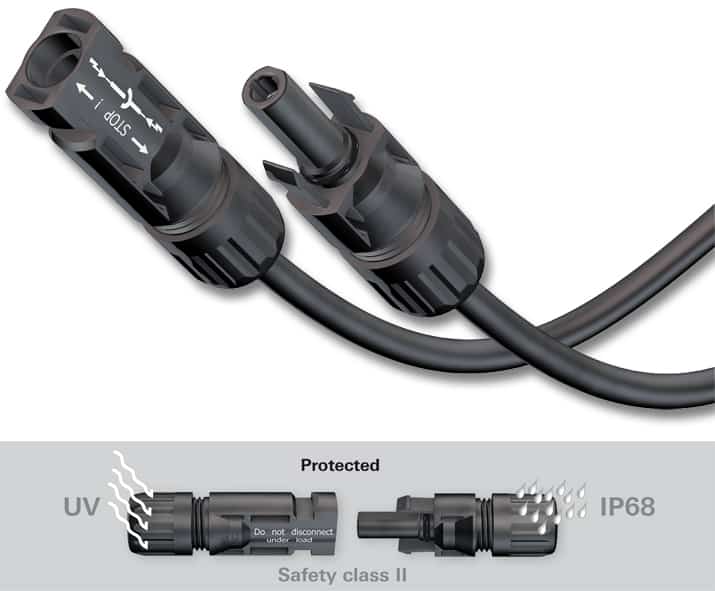
MC4 connectors have emerged as the industry standard for solar panel systems, providing reliable and secure connections between solar panels and other components within the photovoltaic system. They exhibit weather resistance and UV resistance, making them highly durable even in harsh weather conditions. These connectors ensure a stable connection throughout the entire lifecycle of the solar panel array.
Available in both male and female versions, they establish the correct connection while avoiding the risk of reverse polarity. Featuring a simple push-in and locking mechanism, they provide a secure connection, minimizing the chances of accidental disconnection.
Due to their safety, reliability, and compatibility with various solar components, MC4 connectors have gained immense popularity and are widely preferred in the industry.
MC3 connectors are considered the older generation of solar panel connectors. While they were once popular, they have been largely replaced by MC4 connectors. MC3 connectors feature a snap-in locking mechanism that is not as secure as the locking system of MC4 connectors.
Furthermore, MC3 connectors tend to have lower weather resistance and are more prone to corrosion and wear over time. While they still exist in some photovoltaic installations, MC3 connectors have become less common due to the superior performance, safety, and reliability of MC4 connectors.
The T4 connector is an alternative type of solar panel connector developed by Amphenol Industrial Solar Technologies. It offers improvements in both safety and convenience compared to the MC4 connector.
The T4 connector features a threadless design, allowing for quick and easy installation and removal without the need for specialized tools. Additionally, it has a higher current-carrying capacity and enhanced durability compared to the MC4 connector.
While the T4 connector is gaining popularity in the photovoltaic installation field, it has not yet been widely adopted like the MC4 connector. Currently, the MC4 connector remains the mainstream choice in the industry.
The Solarlok connector by TE Connectivity (formerly known as Tyco Electronics) is a specialized solar connector designed specifically for photovoltaic applications. What sets the Solarlok connector apart is its gender-neutral design, allowing any two connectors to pair together without the need for specific male and female components.
These connectors are compatible with various wire sizes and feature a locking mechanism for added security. They are highly regarded for their high-quality materials and durability. Additionally, they exhibit excellent resistance to environmental factors such as UV radiation, extreme temperatures, and moisture.
However, they are not as widely popular as the MC4 connectors, which could pose compatibility issues with certain components. Not all photovoltaic panels may be compatible with the Solarlok design.
Radox connectors, manufactured by HUBER+SUHNER, are another popular type of solar connectors commonly used in the photovoltaic industry. The Radox connectors are renowned for their high performance, reliability, and durability in harsh environments. They are designed to withstand high temperatures, UV radiation, and other extreme conditions.
These connectors utilize crimping technology to establish secure connections and are available in various types. They are compatible with Radox cables, which are well-known for their flexibility, halogen-free materials, and resistance to wear, heat, and cold temperatures.
By undertaking a comparative analysis of distinct connector types, you will gain a deeper comprehension of their resemblances and disparities while assembling your solar power generation system. The ensuing table presents an overview of diverse connector varieties.
| MC4 | MC3 | T4 | Tyco | Radox | |
|---|---|---|---|---|---|
| Cable Cross-Section (mm2) | 2.5 – 10 | 2.5 – 10 | 2.5 – 6 | 4 – 6 | 4 – 6 |
| Rated Current | 39 – 104 A | 20 – 43 A | 15 – 45 A | 20 – 30 A | 38 A |
| Maximum Voltage | 1,000 V | 1,000 V | 1,500 V | 1,500 V | 1,000 V |
| IP Index | IP68 | IP65 | IP68 | IP65 | IP68 |
| Contact Material | Tin-plated copper | Tin-plated copper | Tin-plated copper | Tin-plated copper | Tin-plated brass |
| Maximum Temperature | 221°F (105ºC) | 221°F (105ºC) | 248°F (120ºC) | – | 185°F (85ºC) |
| Safety Mechanism | Plug lock | None | Plug lock | Plug lock | Twist lock |
| Safety Class | II | II | II | II | II |
| Locking/Unlocking Tool | Useful but not needed | Not required | Required | Required | Not required |

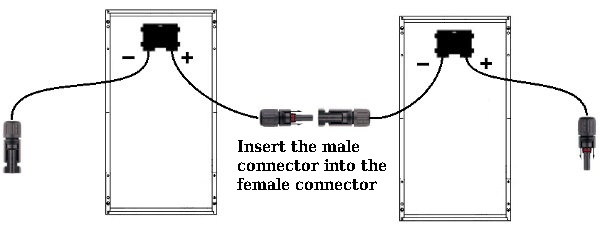
To securely and reliably connect your solar connectors to the wires, it is essential to follow a few simple steps. Let us explore how to install and crimp the solar connectors, such as the MC4 connectors, onto the wires, as well as how to lock or unlock the connection.
1.Gather the Necessary Tools: You will need a wire stripper, a crimping tool specifically designed for MC4 solar connectors, MC4 connectors, and the appropriate solar wires.
2.Shut Down the System: Before starting, ensure that the solar power system is turned off to avoid electrical hazards.
3.Strip the Wire Insulation: Using a wire stripper, carefully strip about 1 centimeter (0.4 inches) of insulation from the end of the solar wire, exposing the metal conductor.
4.Assemble the Connector: Slide the appropriate MC4 connector shell onto the stripped end of the wire. Make sure to slide on the waterproof sealing cap and the metal locking clip.
5.Prepare the Crimping Tool: Open the crimping tool and insert the MC4 crimping pin into the designated slot. This slot will securely hold the pin in place as you proceed with the crimping process.
6.Crimp the Connector Pin: Insert the stripped end of the solar wire into the crimping pin held by the crimping tool. Firmly squeeze the handles of the crimping tool to crimp the pin onto the wire, forming a sturdy and secure connection. Release the handles and remove the crimping pin from the tool. Gently tug on the wire to ensure a secure crimp.
7.Insert the Crimped Pin into the Connector Shell: Push the crimped pin into the MC4 connector shell until it clicks into place, ensuring a secure connection. The pin should not easily come out.
8.Assemble the Connector: Slide the waterproof sealing ring and the metal locking clip onto the connector shell. Tighten the sealing cap onto the connector shell to create a waterproof seal.
9.Test the Connection: Once the crimped solar connector is securely attached to the wire, connect it to the corresponding connector on another solar wire (male to female). The connectors should click together, indicating a secure connection.
Locking and unlocking solar connectors are crucial for ensuring a secure connection in a solar power system. Most solar connectors, such as MC4 connectors, are designed with a built-in locking mechanism to prevent accidental disconnection and maintain a reliable electrical connection.
Place the appropriate side of the unlocking tool around the connected solar connector, aligning the tool’s grooves with the outer edge of the connector. Firmly grip the handle of the tool, allowing it to grasp the connector and disengage the locking mechanism. Gently pull the connector apart while keeping the tool in place.
To ensure your safety, make sure to have the solar power system turned off before locking or unlocking the solar connectors.
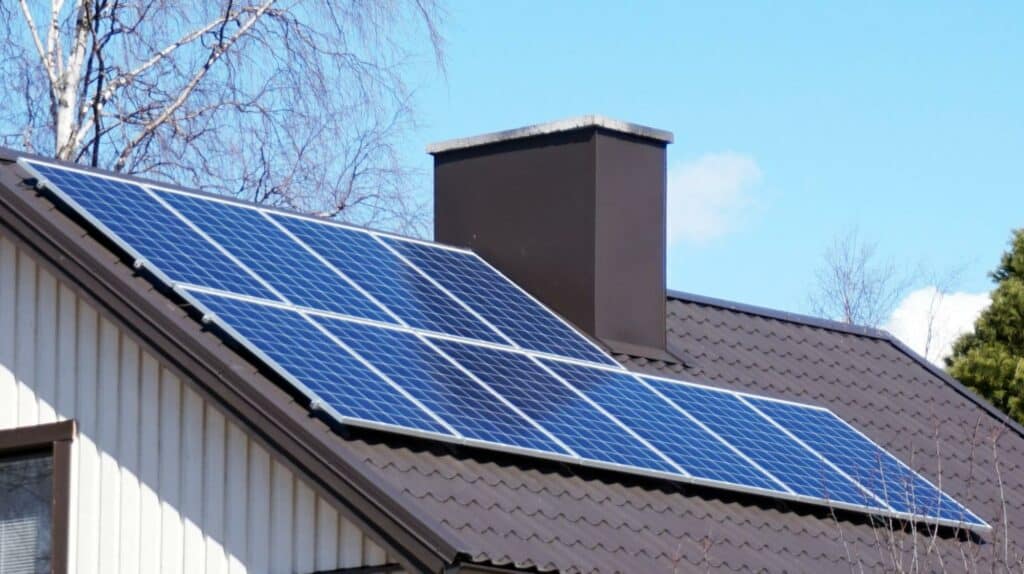
The main differences between MC3 and MC4 connectors lie in their design and functionality. MC3 connectors are an older generation of solar connectors. They feature a push-in locking mechanism, while MC4 connectors have a more secure and waterproof locking system. Due to the improved safety, reliability, and compatibility with various solar panel brands and components, MC4 connectors have become the industry standard.
Not all solar panels use MC4 connectors, but they are widely adopted in the majority of newly manufactured solar panels. Some manufacturers may still use proprietary or older MC3 connectors. These solar panels are likely to be older models with lower efficiency. MC4 connectors have enhanced the compatibility, safety, and reliability of solar panels and their connections.
Solar panel connectors ensure a reliable and secure connection between your solar panels and other components. They make maintenance, installation, and replacement easier. When purchasing solar panels and their corresponding components, it is important to ensure that they use high-quality connectors, such as the standard MC4 connectors. These connectors provide enhanced safety, compatibility, and reliability, contributing to the overall performance and longevity of your solar power system.

If you have any needs for our company’s products, please contact us by phone or email:
Mobil: (+86)18086610187
Email: [email protected]